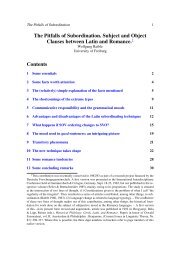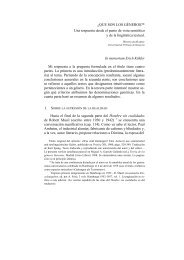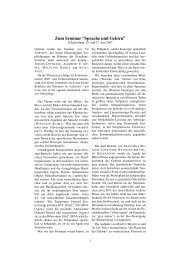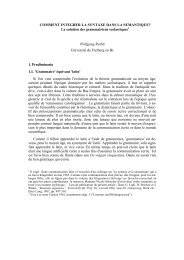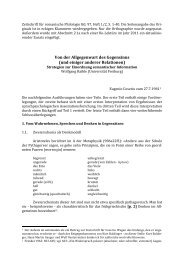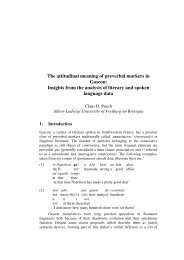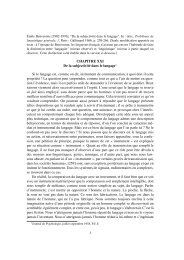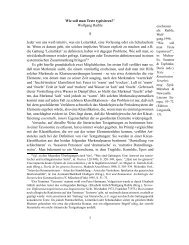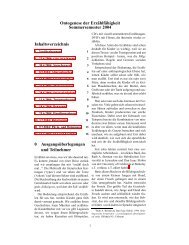A Summary of Role and Reference Grammar
A Summary of Role and Reference Grammar
A Summary of Role and Reference Grammar
Create successful ePaper yourself
Turn your PDF publications into a flip-book with our unique Google optimized e-Paper software.
linking algorithm is required. The details <strong>of</strong> the linking algorithms are given in Van Valin<br />
(2005).<br />
Most <strong>of</strong> what counts as ‘syntax’ in many theories, e.g. case assignment, agreement, <strong>and</strong> WHmovement,<br />
is h<strong>and</strong>led in RRG in terms <strong>of</strong> the syntactic phase <strong>of</strong> the linking. The analysis <strong>of</strong><br />
reflexivization in RRG follows the approach in Jackend<strong>of</strong>f (1992) <strong>and</strong> states the constraints for<br />
core-internal (‘clause-bound’ in other theories) reflexivization at the LS level, not with respect to<br />
the syntactic representation. RRG treats constructions as an important part <strong>of</strong> syntax, <strong>and</strong> they<br />
are represented in terms <strong>of</strong> constructional schemas. Cross-constructional <strong>and</strong> cross-linguistic<br />
generalizations are captured in terms <strong>of</strong> the general principles <strong>and</strong> constraints that constitute the<br />
linking algorithms, e.g. the actor-undergoer hierarchy, the layered structure <strong>of</strong> the clause, the<br />
PSA selection hierarchy. Only the idiosyncratic, language-specific features <strong>of</strong> constructions are<br />
represented in constructional schemas, which may include syntactic, morphological, semantic<br />
<strong>and</strong> pragmatic (focus structure) information.<br />
A simple example from English illustrating the operation <strong>of</strong> the semantics-to-syntax linking<br />
algorithm is given in Figure 19. The numbers refer to the general steps <strong>of</strong> the algorithm: (1) constructing<br />
the semantic representation <strong>of</strong> the sentence; (2) assigning actor <strong>and</strong> undergoer; (3) determining<br />
PSA selection, case <strong>and</strong> adposition assignment, <strong>and</strong> agreement; (4) selecting the appropriate<br />
syntactic template from the syntactic inventory; <strong>and</strong> (5) linking the elements from the<br />
semantic representation into the appropriate positions in the syntactic representation.<br />
LEXICON<br />
SYNTACTIC<br />
INVENTORY<br />
1<br />
4<br />
at: ACC<br />
be-at´ (party , [[do´ (S<strong>and</strong>y , Ø)] CAUSE [BECOME have´ (Chris , flowers )]]<br />
ACS<br />
5<br />
NP<br />
AUX<br />
SENTENCE<br />
CLAUSE<br />
CORE




